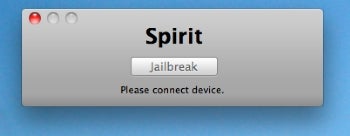The iPad has recently been jail broken. Even if you've held off jailbreaking your other iPhone OS devices, the iPad's substantially faster hardware and difficult-to-define "3rd device" role make the best case yet for jailbreaking. A user- and developer-updated compatibility list will help you see what's safe to install on your iPad, and I'll list my favorite apps and extensions for your freshly jailbroken device.
Apple's App Store has become notorious for its restrictive and often arbitrary decisions about what does and doesn't make it into the store. We've seen many pieces of quality software get denied or kicked out of the App Store, sometimes for unclear or unknown reasons.
Many of these, however, have subsequently made their way into Cydia, the jailbroken app installer (note that the App Store works just fine on jailbroken devices, too). GV Mobile, a great interface for Google Voice, Dashboard, a clone of Mac OS X's Dashboard for iPad, and Wifi Sync, a paid application for performing iTunes syncs over Wi-Fi, are just a few examples. And there are plenty more programs and extensions that are available in Cydia that have never even been submitted to the App Store.
Besides these examples of nixed software, the world of jailbreaking also offers a multitude of tweaks that aren't available to the user on a normal iDevice, like changing system sounds or interface elements. While a much higher proportion of the software available through Cydia is free compared to what you'll find on the App Store, it does also contain paid software.
The iPad: What’s Changed?
Many people express concern about jailbreaking their iPhones because they don't want to sacrifice stability or speed on their phones. While the vast majority of jailbreak software is perfectly stable, it's true that this software doesn't go through the same level of grueling testing to which Apple subjects software that makes it into the App Store. And software that lets you run 3rd-party programs in the background, otherwise change the interface, and so forth, canhave effects on your device's performance, so I can understand why some people are reticent about this.
However, the iPad's processor and memory are substantially more powerful than that of the current iPhones and iPod Touches. Its hardware makes it much better suited to effective multitasking, and its role in most peoples' workflow makes a good for jailbreaking, both because jailbreaking makes it more useful, and because it simply won't be used the same way as your phone.
If jailbreaking means accepting a slightly lower standard of stability (which is debatable to begin with), it just isn't as crucial as on your phone. After all, the iPad is a device begging to be treated more like a computer than a phone, and jailbreaking makes that much more possible than Apple's approved software possibly can.
I for one am willing to sacrifice a little polish for functionality on the iPad.
It is worth noting, however, that multitasking will come to the iPad with Apple's blessing, albeit in a limited form, with this fall's release of iPhone OS 4.
Now, because of the nature of the software available through Cydia, it's important to remember that not everything originally written for iPhone/iPod Touch works with the iPad.
Be sure to consult the Google Docs spreadsheet created by iPhone Dev Team member MuscleNerd, before you install anything through Cydia. If you stick to this list, you should be safe. And if you like to live dangerously, remember that you can always restore and be right back where you started if need be (and don't forget to make a note in the Google Doc about what happened!).
Jailbreak Favorites
My favorite jailbreak programs right now (on both iPhone and iPad) are Notifier, a little extension that puts icons in your status bar for new email, messages, etc, SBSettings, a little panel of useful controls that slides down from the status bar, even within other apps, and Backgrounder (source code), so you can listen to Pandora while you draft an email (for instance).
Another one of particular interest to iPad users is called FullForce, and is a convenient, packaged implementation of an elaborate .plist hack (via Gizmodo) that lets iPhone apps format themselves for the iPad's screen without pixel doubling. It isn't perfect, but works spectacularly for many apps, including Facebook and the New York Times.
These programs don’t all have sites of their own, but you can find them in Cydia on your jailbroken iDevice, along with description and screenshots.
For those of you planning to jailbreak, once you do, don't forget to back up your SHSH ‘blobs,’ the hashes iTunes checks when you restore, so you can restore to this jailbreakable version of the OS even after Apple updates it, closes the jailbreak vulnerability, and stops signing restores of OS 3.2. This way, if you ever need/want to restore to an earlier version of the OS, it’s straightforward to trick iTunes with the backed up ‘blobs.’ Saurik, famed in the jailbreak community for creating Cydia, has a good explanation along with detailed instructions on doing this on his site.
Once you're jailbroken, it's easiest just to back them up through Cydia. Alternatively, this method, using a program called Firmware Umbrella, works whether or not you are jailbroken, and is a good idea if you haven't yet but think you might want to in the future.
Finally, do keep in mind that jailbreaking voids your warranty as far as Apple is concerned, so always restore to an un-jailbroken state before taking your device to Apple for service.
Source


 10:36
10:36
 Hassaan Syed
Hassaan Syed



 Posted in:
Posted in: 


0 comments:
Post a Comment